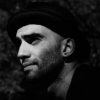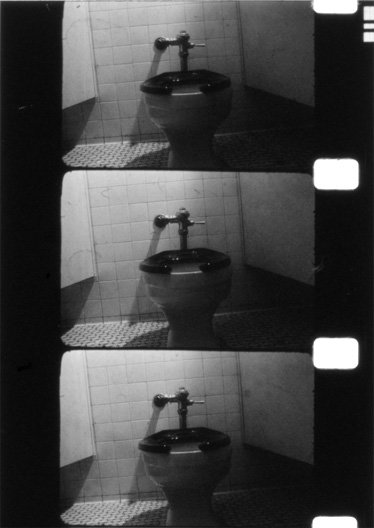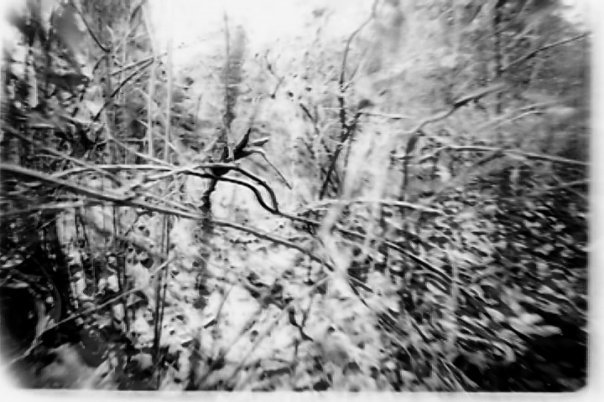-
Posts
9 -
Joined
-
Last visited
Posts posted by Ara Mah
-
-
Hello Tom,
Last year i processed 20 rolls of 16mm B&W reversal stock (7266 Tri-X) in buckets, i can give you the formulas needed to make bleach and other stuff. hope this helps.
( I used D-19 instead of D-76)
B&W Reversal Processing (Tri-X)
*All solutions at 20C
1. Rinse in Water (1 min)
2. 1st Developer: D-19 + Potassium Thiocyanate (5 mins)
3. Wash (3min)
4. Bleach (2mins)
5. Wash (3min)
6. Clearing Bath (1 min) (i didn't use it)
-Turn light on for re-exposure- (2mins)
7. 2nd Developer: D-19 (4mins)
8. Wash (3 min)
9. Fix (6 mins)
10. Wash (5 mins)
You can also wash it for less than 3mins... depends on you. but this is what i did anyway.
1st Developer
Recipe for 2L of working solution
Start with 1.5 L of Water (38C- 52C)
1. D-19 - 319.5g
2. Potassium Thiocyanate - 4g
3. Water to make 2L
Bleach
*Always pour acid (very slowly) to water and NEVER water to acid! Stir constantly while pouring.
Recipe for 2L of working solution
Start with 2L of Water
1. Potassium Dichromate (anhydrous) - 19g
2. Sulfuric Acid (concentrated - 98%) - 24ml
Fixer
Recipe for 2L of working solution
Start with 1.5L of water at 27C
1. Sodium Thiosulfate (anhydrous) - 320g
2. Sodium Sulfite (anhydrous) - 60 to 120g
3. Water to make 2L
OR you can buy an ILFORD rapid fixer (500ml) and dilute according to the specs. which i used :D
So hope this helps! cheers. here is a sample of one of the film strips from my film. u can see the results.
-
Wow, Ara, all I can say is "trippy".
Nice look though.
I like the selective focus too. Was that some sort of tilt/shift, or wide-angle shot wide open?
Hey Karl, thanks, yeah it was a 10mm wide angle lens wide open aperture. :)
-
Hey Paul, well i'm including the digitized image (poor quality - sorry for that) of a frame from my film that i did this past year, this scene was shot with 7363 (hi-con print stock), processed as negative (D-19 and fixer) and this is the positive. it was rated at 8 ASA, at 1.4 and at 12fps. so that's like at 1 f-stop at 24fps. you can see the contrast i got with these settings. the day was not really sunny, but not overcast either.
-
An experimental documentary about girls in love for the first time.
Shot for a 2nd year project on the BA Film Production course at The Arts Institute at Bournemouth.
This is the first film I have shot on 16mm film. It was shot on an ArriSR2 on Kodak 50D and the interviews were shot with a JVC HD Camera.
Would very much appreciate any feedback, cheers
very good job... beautifully made honestly. i very much liked the "experimental" feel of the film, although i personally would've used the interviews as voice overs instead. But then again, as you said its a documentary, not a poetic experimental film.. so again, really good job. i love the colors, all the camera work, and framing. I personally prefer film to video, so yeah i liked the parts done with film.
cheers.
-
I know we've been here a few times. I was wondering if there were any new observations about it. Did everyone decide that the ASA was in the ballpark of 5 or 6? How did it transfer in a scan? Was it fast enough to get sunny day exposures? How does it hold up to the kinds of contrasts found on sunny days? Any thing else you'd like to throw in is welcome. I'm kind of hoping that it has become a well enough researched topic that we can get a comprehensive answer to this technique.
hey i don't know if this helps, but i've been working with hi-con 7363 film stock this past year for my film, and i can say that i got amazing results with it, rating it at 8 ASA. it is usually between 6- 10, but i rate it at 8 which gave me some really good results. i never had difficulty in shooting outside especially on sunny days. i also did some long exposures frame by frame under low light and i also had amazing results. of course as you know, its latency is not that good, i would say maybe 1 stop or less, so you have to get the exposure spot on. i would suggest using a spot meter instead of an incident light meter, and taking the reading of the brighter parts of your subject or whatever which is a good way to get a contrasty image. but of course the amount of contrast also depends on the quality of light, if its midday or afternoon...
cheers!
P.S. i processed 7363 in two ways, one as negative, with D-19 and fixer, and also as reversal, and i found that processing as negative gave me more contrast. so maybe process as negative, and ask for a positive print?
-
Very nicely done. i love it. i like the rhythm of the film and the images, and how it is edited. i would've maybe used more white "emptiness" in between images, but of course its just an opinion.
again, nice job.
-
This film is designed to be processed in D97 B/W positive developer. It is mainly used for shooting titles. The term negative and positive is really irelevlent. If you shoot black letters on a white background you will get white letters on a black background after processing, if you shoot white letters on a black background you will get black letters on a white background.
If you used a rostrum to shoot a b/w photograph the result would be a negative, if you shot a negative you would get a print.
You can also process 7363 as reversal, in which case you would get a positive if you start with a positive and a negative if you start with a negative.
It was quite common in the past to use high contrast stock with reversal processing and start with white letters on a black background to produce white letters on a black background for superimposing. You avoid problems with flare which can occur when photographing black letters on a white background.
You can download a datasheet from Kodak at
http://motion.kodak.com/motion/uploadedFil..._lab_h15363.pdf
Brian
Hey Brian, thanks a lot for the info and the data sheet. Last time when i processed my hi-con stock, i used D-19 to develop and then wash which gave me the inverted image. now i want to process it as reversal, but i'm not sure if the developing time would change a bit.
do u have any idea as to how long i should develop the hi-con? the first developer time in the reversal was 5 mins.
Thanks again.
-
well, first post, i just finished shooting my film and i have a lot of rolls to process, can't wait to see the results! i already processed a 7266 bw tri-x reversal, and it turned out beautifully. my question is, how can i process my hi-con 7363 rolls as positives? do i use the same thing as reversal? or is there any other way? i already know how to process 7363 as negative, but i need to know how to do it as a positive. anyway, help?
Thanks.






Lens element loose inside the lens - Nizo S560
in Super-8
Posted
recently i bought a Nizo S560 on ebay with no returns (i know) and it seems there's an element inside the lens which is loose... if i look through the viewfinder, the image is blurry (naturally) and if i look in the lens i can clearly see it moving when i turn the camera upside down.
any ideas if it can be repaired?
thanks.